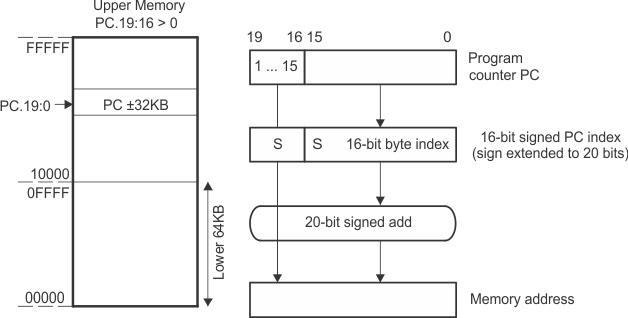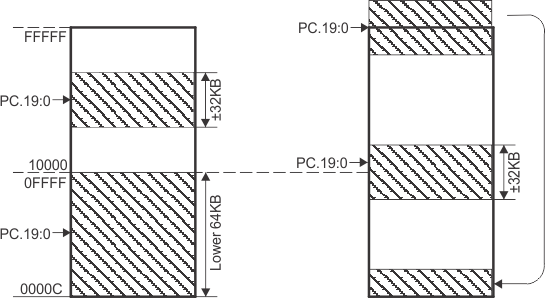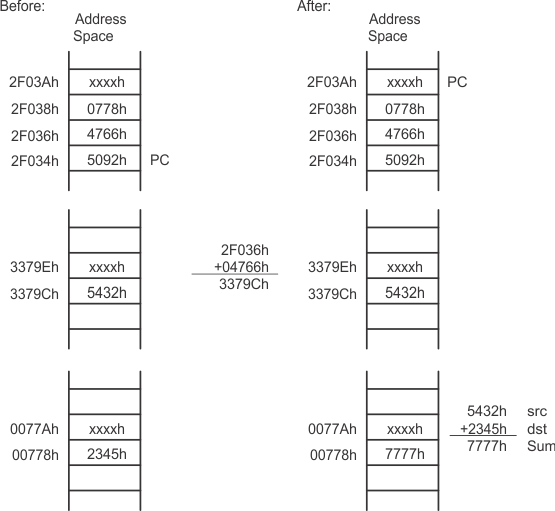SLAU367P October 2012 – April 2020 MSP430FR5041 , MSP430FR5043 , MSP430FR50431 , MSP430FR5847 , MSP430FR58471 , MSP430FR5848 , MSP430FR5849 , MSP430FR5857 , MSP430FR5858 , MSP430FR5859 , MSP430FR5867 , MSP430FR58671 , MSP430FR5868 , MSP430FR5869 , MSP430FR5870 , MSP430FR5872 , MSP430FR58721 , MSP430FR5887 , MSP430FR5888 , MSP430FR5889 , MSP430FR58891 , MSP430FR5922 , MSP430FR59221 , MSP430FR5947 , MSP430FR59471 , MSP430FR5948 , MSP430FR5949 , MSP430FR5957 , MSP430FR5958 , MSP430FR5959 , MSP430FR5962 , MSP430FR5964 , MSP430FR5967 , MSP430FR5968 , MSP430FR5969 , MSP430FR5969-SP , MSP430FR59691 , MSP430FR5970 , MSP430FR5972 , MSP430FR59721 , MSP430FR5986 , MSP430FR5987 , MSP430FR5988 , MSP430FR5989 , MSP430FR5989-EP , MSP430FR59891 , MSP430FR5992 , MSP430FR5994 , MSP430FR59941 , MSP430FR6005 , MSP430FR6007 , MSP430FR6035 , MSP430FR6037 , MSP430FR60371 , MSP430FR6041 , MSP430FR6043 , MSP430FR60431 , MSP430FR6045 , MSP430FR6047 , MSP430FR60471 , MSP430FR6820 , MSP430FR6822 , MSP430FR68221 , MSP430FR6870 , MSP430FR6872 , MSP430FR68721 , MSP430FR6877 , MSP430FR6879 , MSP430FR68791 , MSP430FR6887 , MSP430FR6888 , MSP430FR6889 , MSP430FR68891 , MSP430FR6920 , MSP430FR6922 , MSP430FR69221 , MSP430FR6927 , MSP430FR69271 , MSP430FR6928 , MSP430FR6970 , MSP430FR6972 , MSP430FR69721 , MSP430FR6977 , MSP430FR6979 , MSP430FR69791 , MSP430FR6987 , MSP430FR6988 , MSP430FR6989 , MSP430FR69891
4.4.3.2 MSP430 Instruction With Symbolic Mode in Upper Memory
If the PC points to an address above the lower 64KB memory, the PC bits 19:16 are used for the address calculation of the operand. The operand may be located in memory in the range PC ± 32KB, because the index, X, is a signed 16-bit value. In this case, the address of the operand can overflow or underflow into the lower 64KB memory space as shown in Figure 4-20 and Figure 4-21.
 Figure 4-20 Symbolic Mode Running in Upper Memory
Figure 4-20 Symbolic Mode Running in Upper Memory  Figure 4-21 Overflow and Underflow for Symbolic Mode
Figure 4-21 Overflow and Underflow for Symbolic Mode | Length: | 2 or 3 words |
| Operation: | The sign-extended 16-bit index in the next word after the instruction is added to the 20 bits of the PC. This delivers a 20-bit address, which points to an address in the range 0 to FFFFFh. The operand is the content of the addressed memory location. |
| Comment: | Valid for source and destination. The assembler calculates the PC index and inserts it |
| Example: | ADD.W EDE,&TONI ; |
| This instruction adds the 16-bit data contained in source word EDE and destination word TONI and places the 16-bit result into the destination word TONI. For this example, the instruction is located at address 2F034h. | |
| Source: | Word EDE at address 3379Ch, pointed to by PC + 4766h, which is the 16-bit result of 3379Ch – 2F036h = 04766h. Address 2F036h is the location of the index for this example. |
| Destination: | Word TONI located at address 00778h pointed to by the absolute address 00778h |
